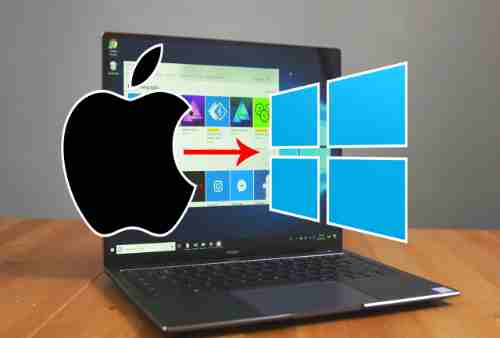If you’re encountering issues with the graphics displayed on your PC, the case may differ with the graphics driver.
Thankfully, there are several methods to repair and reset the broken graphics driver, and in this article, we’ll go over a couple of ways to do so.
In the beginning, we’ll discuss why resetting your graphics drivers is a great option if you’re experiencing difficulties.
What does resetting the graphics driver do?
Setting up the GPU driver is as simple as restarting your computer or installing responsive software to enable communication between the PC operating system and graphics hardware. The graphics card driver renders graphics and video on your PC. If damaged, it can lead to issues like screen flickering and black screens. Resetting the image drivers returns the system to its default settings. It clears the cache and junk files, boosts your computer’s performance, eliminates screen crashes, and fixes errors when they occur.
Is it reasonable to reset the graphics driver?
Graphics drivers allow your hardware to display images and other graphical content to the user. Even though Windows will reset the graphic drivers promptly in the event of an error, there are times when you may have to reset the drivers by hand. Doing this is beneficial in certain situations, like:

Repairing glitches: Resetting the graphic drivers resolves screen glitches, distortion, or visual artifacts. Also, it can fix freezing, flickering, or black screen issues and other issues.
Enhances Performance: It eliminates junk files and releases the locked cache information. It also eliminates errors and improves graphics performance, especially when games or applications have lags or slow issues.
Compatibility: It is a way to address compatibility issues that occur after software updates or hardware changes.
Troubleshooting: Resetting the graphics driver helps fix graphics-related issues before considering more radical options.
But several disadvantages and precautions must also be taken into account:
Configuration Changes: All temporary graphics-related files are deleted, and custom settings are restored to their default values when the controller is restarted.
Workaround: This is a quick fix that can fix immediate problems.
But, there are several disadvantages and precautions also to be taken into consideration:
Troubles related to OS Updates: In certain situations, Windows may try to upgrade the GPU driver once you’ve reset the driver. This can sometimes create conflicts or cause issues caused by the installed driver.
How to Reset Graphics Driver?

How To Reset Graphics Driver From Keyboard Shortcut
For a reset of your graphics drivers, hold the Windows key, Ctrl-Shift, and B keys at the same time. Within a short time, the screen on your PC begins to blink and will briefly turn dark, then return to normal. It is the most straightforward method to reset your graphics driver.
How To Reset Graphics Driver From Task Manager
Press the Shift, Ctrl, or Esc keys to start the Task Manager.
Then, click”Process” from the “Process” tab under the File menu.
In the following window, click on the left-hand side of the screen beneath”Apps,” click on “Background Processes,” “Apps,” and click on “Background Processes”.
Look for files with names like “AMD” or “NVIDIA” or the graphics card’s brand within the open window.
Click on “End Task,” which appears at the bottom of the file. This is located just below the file. Copy all graphics card-related documents (including the words Nvidia and AMD). The program will clean your driver free of any traces. It would help if you waited until your computer’s screen was beginning to flash. Once the task has been completed, all the files have been eliminated.
How To Reset Graphics Driver From Device Manager
Another option is resetting the driver for graphics. The driver must be disabled GPU before re-enabling it using Device Manager.
- For the first time, hold to start, press the Windows and X keys simultaneously to open the menu to a screen.
- From that menu, select Device Manager.
- Click “Display Adapters” in the new window. Make sure that the graphic drivers are displayed on the display.
- Click right-clicking on the Graphics Driver to bring up the menu.
- To deactivate the GPU to disable the GPU, click “Disable Driver” from the menu.
- If your PC contains more than one Graphics driver, follow the same procedure for each driver to turn off.
- Then, reboot your device to finish the disabling process.
- To start Device Manager, press the Windows and X keys again.
- Click “Display Adapters” once more for the disabled GPU documents.
To turn it on, click right on a GPU file and then select “Enable Driver” from the pop-up menu. If you have multiple Graphics Drivers, you can repeat the steps.
Make sure to restart your PC to complete the process of reset.
Uninstalling And Reinstalling The Driver
Reinstalling and uninstalling the Graphics rivers is an efficient system reset. If the standard way of setting it doesn’t produce the desired results, then you could also try this technique.
Then, press the Windows or X keys to launch Device Manager. Device Manager.
Then, in the next window, you will see a new window. Click “Display Adapters” to expand the window. You can find each graphics driver on this page.
Right-click on a graphic driver to display the menu that pops up.
Click on “Uninstall Device.”
If you see a pop-up window, click the checkbox next to “Delete the driver software for this device,” after that, press “Uninstall.”
Use the same procedure to remove each driver file.
Restart your device. The device will install the driver if you’re running Windows 10 or 11 OS.
You can also visit the company’s official website that makes the graphics card using your device. Next, download the graphics card driver software (applicable to your computer’s operating system and model).
Following the download, follow the directions on installing the driver for graphics and updating it to the latest version.
Advantages Of Resetting Graphics Driver!
There are many benefits, which include:
Updated GPUWhen you reset the driver for graphics, edit it to the most recent version that is much more sophisticated and efficient. Therefore, you’ll see better pictures with no frequent experiencing crashes.
Remove cache: If you use the GPU often (i.e., games, gaming), the GPU could create many cached files. These files can cause the GPU to break down. Resetting the GPU allows you to eliminate the cached and unnecessary files, leading to a cleaner and better-performing GPU.
The removal of bugs is as simple as resetting the driver for graphics also gets rid of visual bugs that result in poor pictures in your
Conclusion
The steps listed below are the ones you could follow to reset, install, or fix the issue created by your graphics card. If you do these steps guidelines, your card might cease causing problems. If you continue to have problems, you should seek expert help, as the issue could be caused by different factors, not just your graphics card.